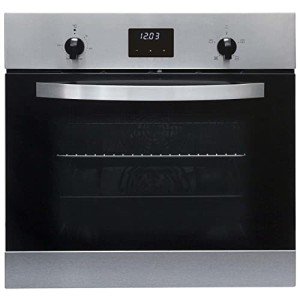The Most Underrated Companies To Watch In The Oven And Hob Industry
The Complete Guide to Ovens and Hobs: Choosing the Right Appliances for Your Kitchen
When it pertains to producing culinary masterpieces, the significance of quality kitchen devices can not be overstated. Ovens and hobs are the heart of any kitchen, allowing home cooks and expert chefs alike to develop, bake, and sauté delicious meals. Understanding the different types of ovens and hobs, in addition to their features and functionalities, is essential for making informed getting choices. This short article offers an in-depth take a look at ovens and hobs, helping you browse the options available so that you can improve your kitchen's efficiency and flexibility.
Understanding Ovens
Ovens are necessary for cooking and baking and been available in numerous types to meet varied cooking requirements. Here is an introduction of the most typical types of ovens:
1. Traditional Ovens
Traditional ovens work by warming the air inside with gas or electric elements. They are ideal for baking cakes, roasting meats, and cooking casseroles.
2. Convection Ovens
These ovens use a fan to flow hot air, offering an even temperature level throughout, which can substantially reduce cooking times. They are ideal for baking cookies or roasting veggies.
3. Microwave Ovens
Microwaves prepare food quickly utilizing electro-magnetic radiation. They are perfect for reheating leftovers or thawing frozen foods however are not suitable for browning or crisping.
4. Wall Ovens
Integrating a wall oven into your kitchen design can conserve space and produce a sleek aesthetic. They work similar to conventional or convection ovens but are built into the wall for simple access.
5. Range Ovens
These ovens integrate stovetop burners with an oven, providing versatility for those who prefer a single home appliance for all cooking needs.
Type
Cooking Method
Best For
Traditional
Electric/Gas
Baking, roasting
Convection
Air blood circulation
Quick cooking, even baking
Microwave
Electromagnetic
Reheating, thawing
Wall Ovens
Electric/Gas
Space-saving, sleek style
Variety Ovens
Electric/Gas
Flexible cooking
Checking out Hobs
Hobs, likewise understood as cooktops or stovetops, offer the surface area to cook pans directly over a heat source. Like ovens, hobs come in various types, which can be categorized as follows:
1. Gas Hobs
These hobs use a flame for cooking and provide instant heat control. They are preferred by many chefs for their responsiveness and accuracy.
2. Electric Hobs
Electric hobs use coils or flat surfaces to heat pans. They use a constant heat source, but they might take longer to cool off compared to gas hobs.
3. Induction Hobs
Induction hobs utilize electro-magnetic energy to heat pots and pans directly, making them highly effective and quicker to prepare. They are also simpler to clean as the surface stays relatively cool.
4. Strong Plate Hobs
These are older technology that uses solid metal plates to provide heat. They are durable however are less efficient than modern-day options.
Type
Heat Source
Benefits
Downsides
Gas Hobs
Flame
Instant heat control
Needs gas connection
Electric Hobs
Electric coils
Constant heat
Slower to cool down
Induction Hobs
Electromagnetic
Quick cooking, energy-efficient
Requires suitable cookware
Solid Plate Hobs
Strong metal plate
Sturdiness
Less efficient
Choosing the Right Appliances
Picking the best oven and hob for your kitchen involves thinking about numerous elements:
1. Space and Layout
Step your kitchen area to identify the size and placement of the oven and hob. Make sure there is click the following internet page , particularly for gas home appliances.
2. Cooking Style
Think about how typically you cook and the type of meals you prepare. A convection oven might fit devoted bakers, while someone who frequently stir-fries might prefer an induction hob.
3. Energy Source
Select the energy source that best fits your lifestyle. Gas provides instant control, while electric and induction hobs provide ease of use and are typically more energy-efficient.
4. Spending plan
Determine your budget plan for kitchen devices. Ovens and hobs differ significantly in cost, depending on features and brands. Focus on important functions that meet your requirements.
5. Functions
Search for performances such as self-cleaning choices, clever technology compatibility, particular rack configurations for ovens, and safety functions for hobs.
Frequently Asked Questions (FAQs)
Q1: What is the difference between a traditional oven and a convection oven?A1: Conventional ovens warm the air inside without fans, while convection ovens utilize a fan to distribute hot air for more even cooking. Q2: Can I utilize aluminum cookware on induction hobs?A2: No, induction hobs need ferrous (magnetic )materials like cast iron or stainless steel to work effectively. Q3: Do gas hobs heat quicker than electric hobs?A3: Yes, gas hobs offer instant heat, making them faster for cooking compared to electric hobs. Q4: Is it safe to utilize a microwave oven?A4: Yes, when utilized according to the producer's instructions, microwave ovens are considered safe for food preparation.
Q5: How frequently must I clean my oven and hob?A5: For optimal efficiency, clean your oven regularly, specifically after spills. Hobs must be cleaned down after each usage
to avoid accumulation. Ovens and hobs
are indispensable components of a well-equipped kitchen. Comprehending the different types, their performances, and the considerations included in purchasing
them can dramatically boost cooking experiences. Whether one is a casual home cook or an expert chef, investing time in picking the right devices can result in culinary success and complete satisfaction in the kitchen. By focusing on features that line up with your cooking design, energy sources that fit your home, and budget plan factors to consider, you can create an effective work area that inspires culinary creativity. 